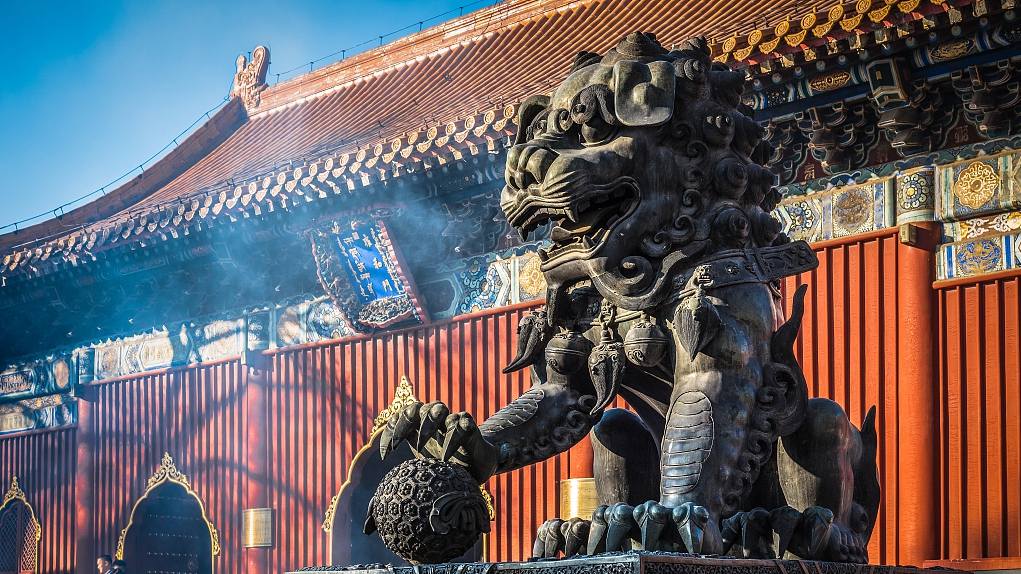Praying for luck and happiness is an ancient tradition in China for Spring Festival. With its long history, there are many places to worship in Beijing on the first day of the Chinese New Year. Follow us and have a look at those lucky places.
Yonghe Temple
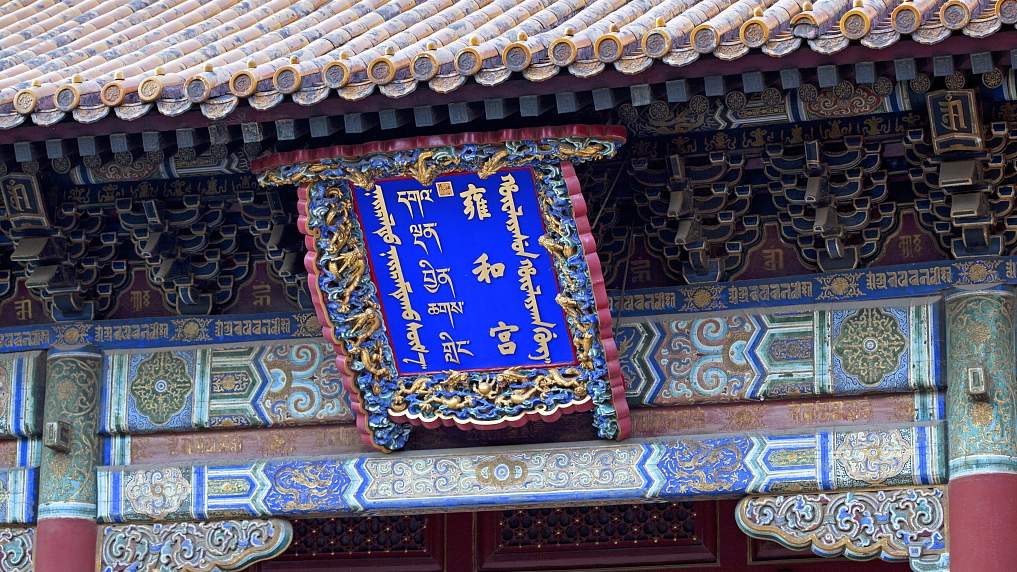
The Yonghe Temple in Beijing, China. /VCG Photo
The Yonghe Temple in Beijing, China. /VCG Photo
The Yonghe Temple, also known as the Yonghe Lama Temple, is a Tibetan Buddhist temple and monastery. The temple's architecture and artwork is a combination of Han Chinese and ethnic Tibetan styles. Before becoming a Tibetan Buddhist temple, it was the house of Emperor Yongzheng and Emperor Qianlong before they inherited the throne in Qing Dynasty (1616-1912). Now the Yonghe Palace is the most magnificent historical landmark along the Chinese capital's 2nd Ring Road.
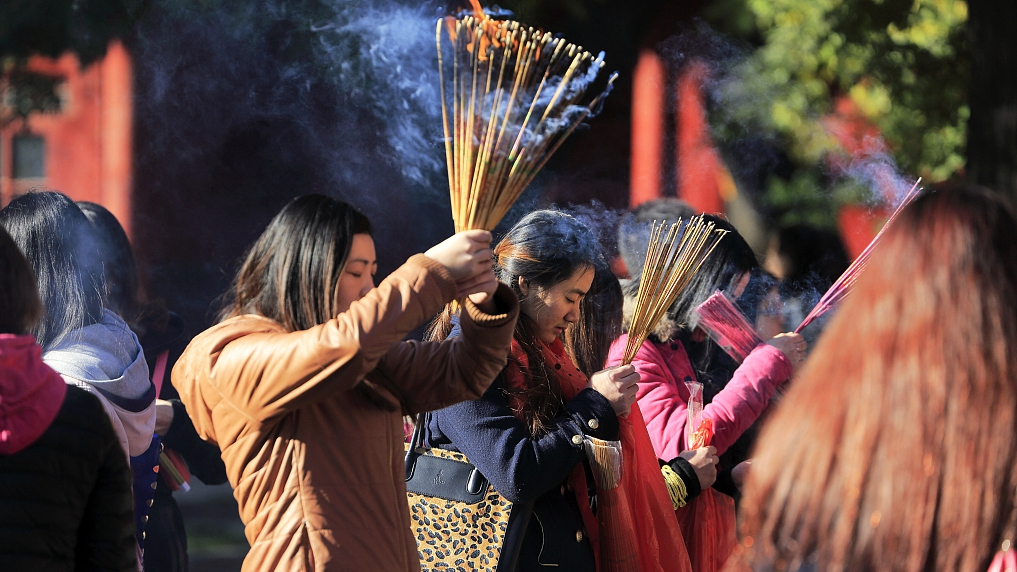
Worshipers in the Yonghe Temple in Beijing, China. /VCG Photo
Worshipers in the Yonghe Temple in Beijing, China. /VCG Photo
For a hundred years, Yonghe Palace has become one of the most prosperous temples for worshiping in Beijing. The number of prayers here has increased every year, with the first and fifteenth day of the lunar Chinese New Year being among the busiest. More than 80,000 people from across China visited Yonghe Palace for the blessing on the first day of last year's Spring Festival.
Location: 12 Yonghegong Dajie, Beixinqiao, Dongcheng District, Beijing. Lines 2 and 5 of the Beijing Subway both stop at Yonghegong Lama Temple Station, as do a number of city buses.
Tanzhe Temple

Night view of the TanzheTemple in Beijing, China. / VCG Photo
Night view of the TanzheTemple in Beijing, China. / VCG Photo
As the old saying goes "Before the old city of Beijing was built, the Tanzhe Temple has already been there." It is one of the most well-known temples in Beijing. At one time, it was one of the most important temples in the nation.
As the oldest temple in Beijing, Tanzhi Temple is also a good place for those wishing for prosperity in the new year, including a happy marriage or a bright career path.
Location: Tanzhe Temple is situated in the Western Hills, a mountainous area in western Beijing. It is located near China National Highway 108 in the Mentougou District.
Prince Gong's Mansion
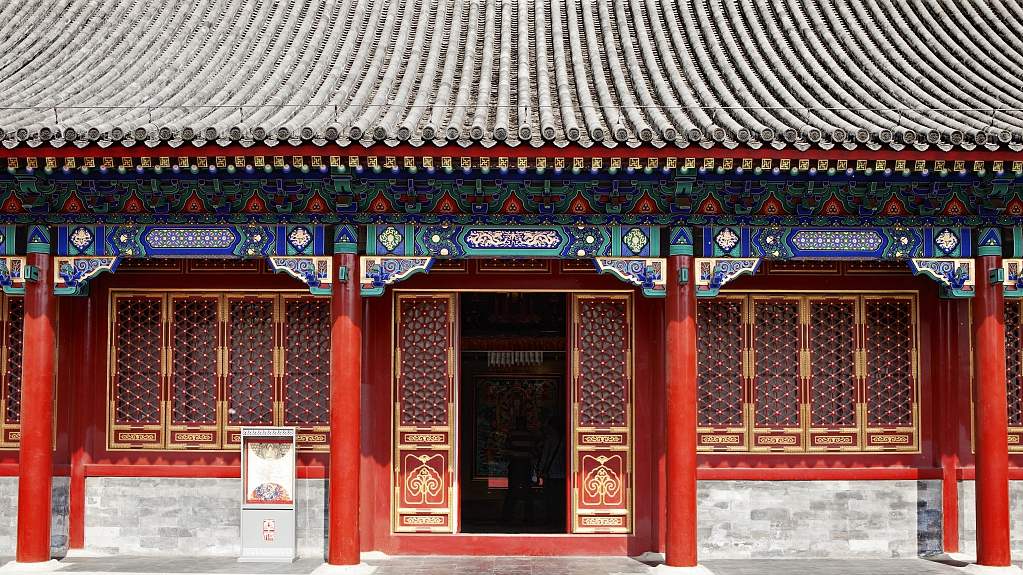
Prince Gong's Mansion in Beijing, China. /VCG Photo
Prince Gong's Mansion in Beijing, China. /VCG Photo
Prince Gong's Mansion consists of large siheyuan-style mansions and gardens, which is a typical architectural style in Beijing. Originally constructed for Heshen, an official highly favored by the Qianlong Emperor, it was later renamed after Prince Gong of the late Qing dynasty.
What makes Prince Gong's Mansion a place of blessing is a plaque with the characters “the best luck in the world,” written on it. Also known as the plaque of “Fu,” written by Emperor Qianlong, it later mysteriously disappeared. In 1962, during the time when the Prince Gong Mansion was being reconstructed, archaeologists found the missing plaque in a secret cave in the back garden of the Mansion.
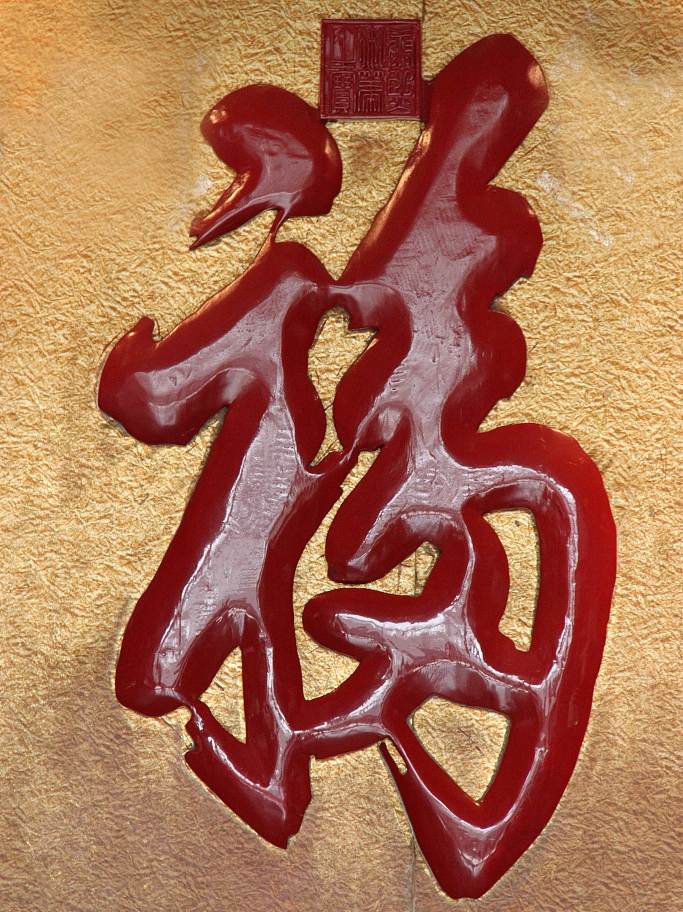
The plaque of “Fu”. /VCG Photo
The plaque of “Fu”. /VCG Photo
The plaque of "Fu" has long been famous across the world. Countless tourists come to pray for happiness and bring back a print version of the “Fu” home during the Spring Festival for good luck at home.
Location: Prince Kung's Mansion is located at ShiChaHai, Xicheng Qu. Take subway Lines 6 and get off at Beihai North. Driving is not recommended due to the lack of parking lots.

